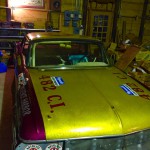Winona State University hosted the latest in its monthly panel series on gender-based violence this past Monday, Feb. 15. As a joint effort between the Minnesota State University Student Association (MSUSA) and Winona State’s RE Initiative Club, a panel is held each month focusing on gender-based violence in the community. Monday’s panel focused on how gender-based violence specifically affects males.
According to a prepared statement from the club, Winona State University’s RE Initiative supports survivors of gender-based violence, and works to create a culture of respect and responsibility within the community. According to Kathreen Smith, President of the RE Initiative on campus, these panels begin a dialog about gender-based violence on campus. Smith said the panels are Q-and-A format, but often delve into more intricate discussions.
“Normally one question turns into a really great educational discussion,” Smith said.
According to her, they’ve been averaging around 30 attendees at each event. Numbers for Monday’s panel were in line with previous events.
Monday’s panel consisted of six men: two faculty members and four students.
Hunter Beckstrom, a junior who works in the RE Initiative as a peer advocate, served as moderator for the panel.
Before the Q-and-A began panelist Jacob Stock, a Women and Gender Studies (WAGS) minor, began by defining gender-based violence. Stock said it’s used as an umbrella term to refer to any type of violence in which gender plays a role. This can include sexual assault, harassment, stalking, domestic violence, and partner violence. Stock explained that typically this violence is perpetrated by males.
“As our training goes, it is most often the male figure perpetrating these crimes against a female figure, but of course there are exceptions to that as well,” Stock said.
Much of the panel’s discussion revolved around redefining masculinity, and the difficulties that brings. Ben Strand, a panelist and Senior Journalism major, said men often feel restricted by traditional definitions of masculinity and are pressured to conform to those guidelines.
“If males don’t fit into this spectrum of what is defined as masculinity in our society, then they feel like because they don’t fit in they don’t belong,” Strand said.
Stock explained males are typically socialized to be more violent and domineering throughout their lives, which contributes to this stereotypical idea of masculinity.
Alexander Hines, WSU’s Director of Inclusion and Diversity, was also on the panel. He gave an example of male socialization with an activity he frequently does with young men. He asks them to come up with 20 words that come to mind when they think about what it means to be a man. In this activity, Hines said the word that doesn’t come up is the most disconcerting.
“They talk about power, control and respect,” Hines said.
According to Hines, the word they don’t use is love.
“If you don’t love yourself, how are you going to love the body of that female?” Hines said.
WSU Student Senate President and panelist Joshua Hanson explained how society tells males they are supposed to act a certain way. Men are raised to believe they’re entitled to the privileges they’ve grown accustomed to, even though that’s not the case.
“It starts from boyhood and how you are told about masculinity,” Hanson said.
As an example, Beckstrom said walking home late at night in Winona, is radically different for males and females.
“Girls walking home at night have to have a whole game plan,” Beckstrom said, “I just walk home, it doesn’t matter where I go or what I do.”
A portion of the discussion revolved around portrayals of men in the media and how that contributes to societal ideals of masculinity and assumptions based on gender. The panelists emphasized critical analysis of the media along with the importance of continually questioning the messages it sends. Strand said people should ask themselves why certain characters or people are portrayed in a certain way.
To emphasize the importance of events like this, Beckstrom cited a statistic. Although Winona State is regarded as a safe campus, according to the most recent campus climate survey, it’s at the national average of one in five women being sexually assaulted during their lifetime. Hanson emphasized that having a conversation about these issues isn’t always easy.
“The conversations that you have to have aren’t always comfortable,” Hanson said. “You can’t be comfortable always in this work.”
As the panel neared its end, the focus shifted to advice on how attendees could prevent future gender-based violence.
“The conversation that we are having here tonight shouldn’t be ended when the last question is asked and the final answer is given,” Strand said. “It needs to extend beyond this room here,” Strand said.
After the panel concluded, Alexander Hines stressed the importance of greater faculty and administration attendance at these events. Hines said that getting figures of the university to participate in these types of events would help to spread this message.
The next panel in this series will take place March 25 in Stark 103 at 7 p.m. and will focus on how gender-based violence affects people of color.
Strand on his personal commitment to stopping GBV:
Stock on things students must be more aware of:
Hanson explaining the statistics:







